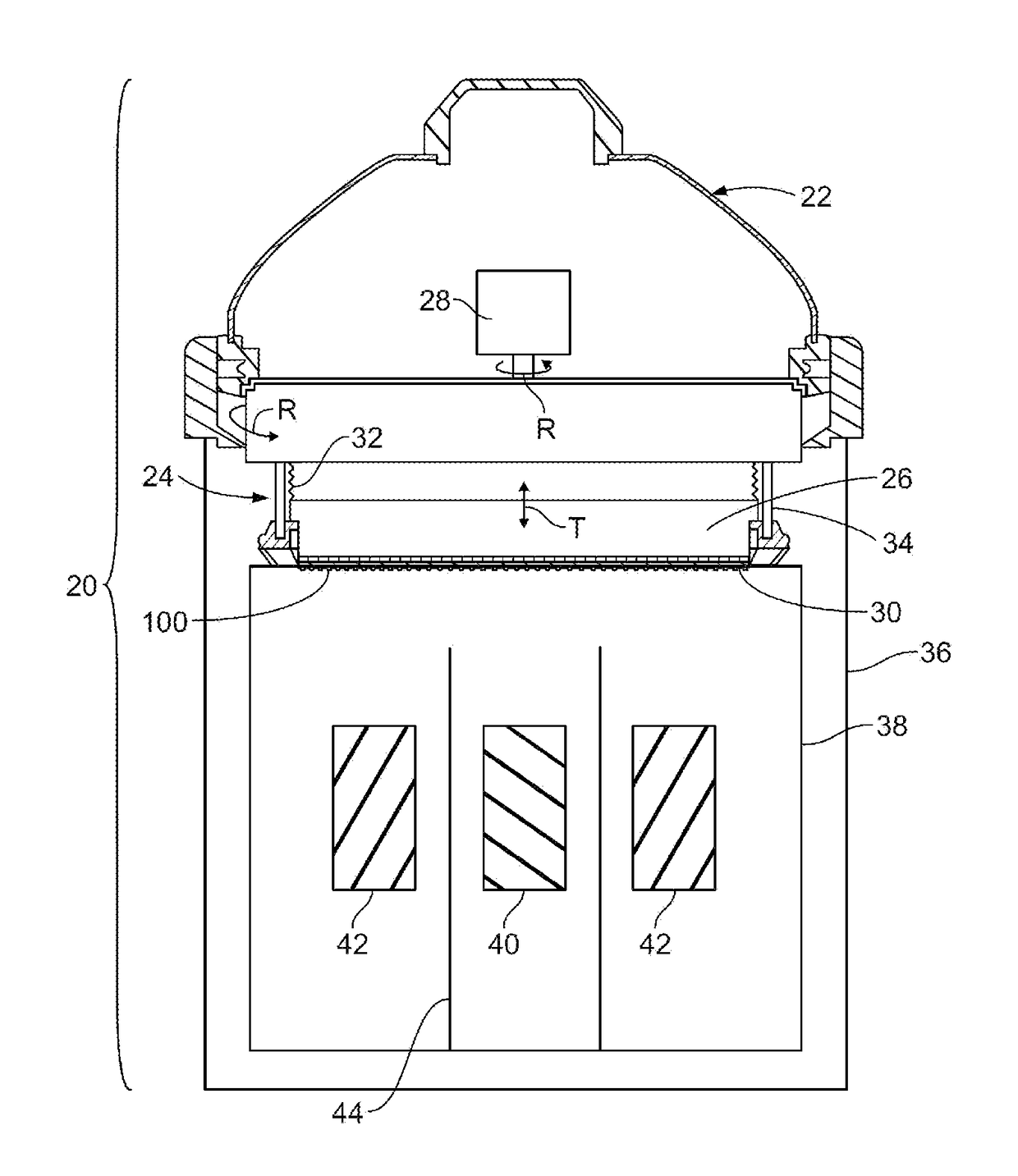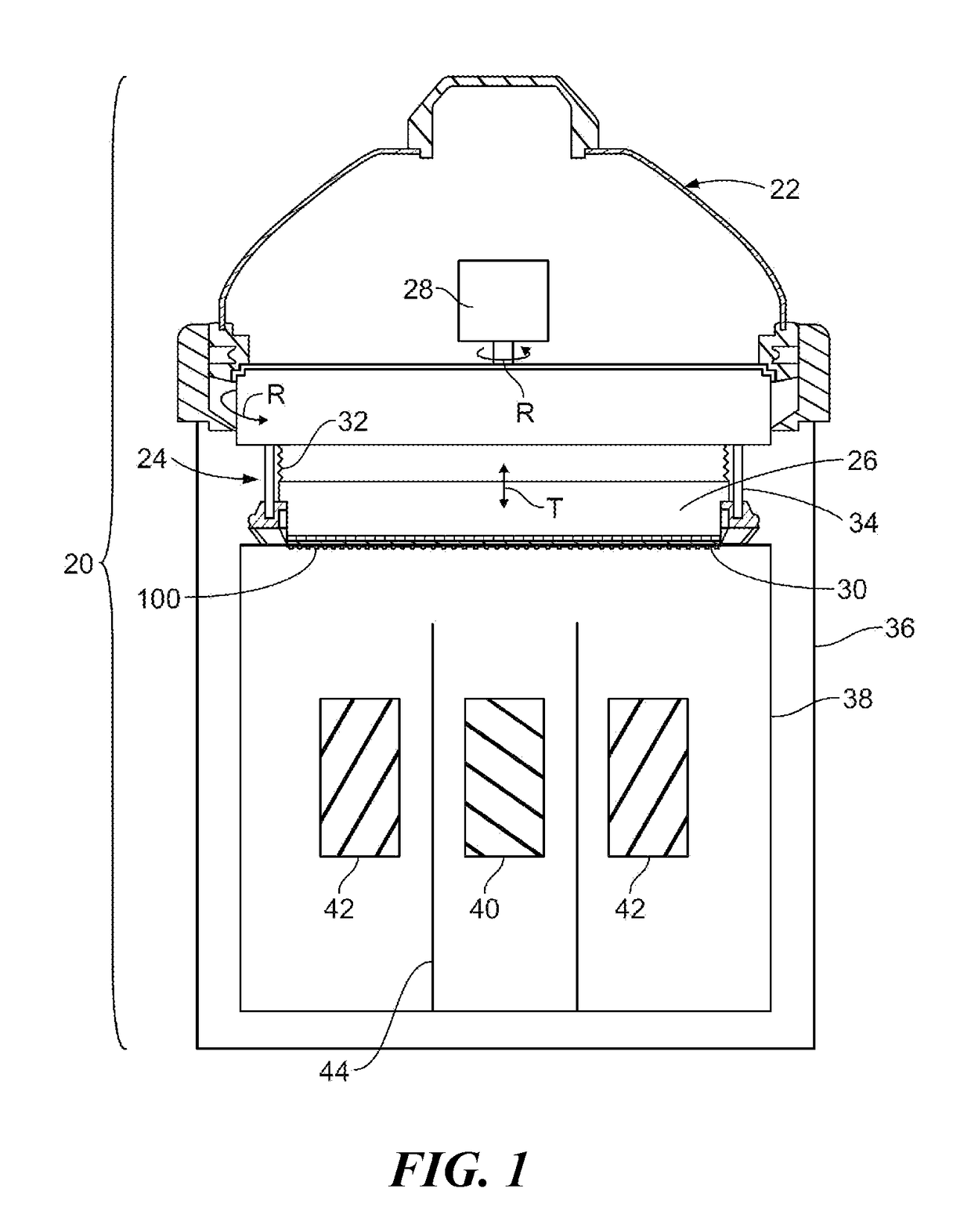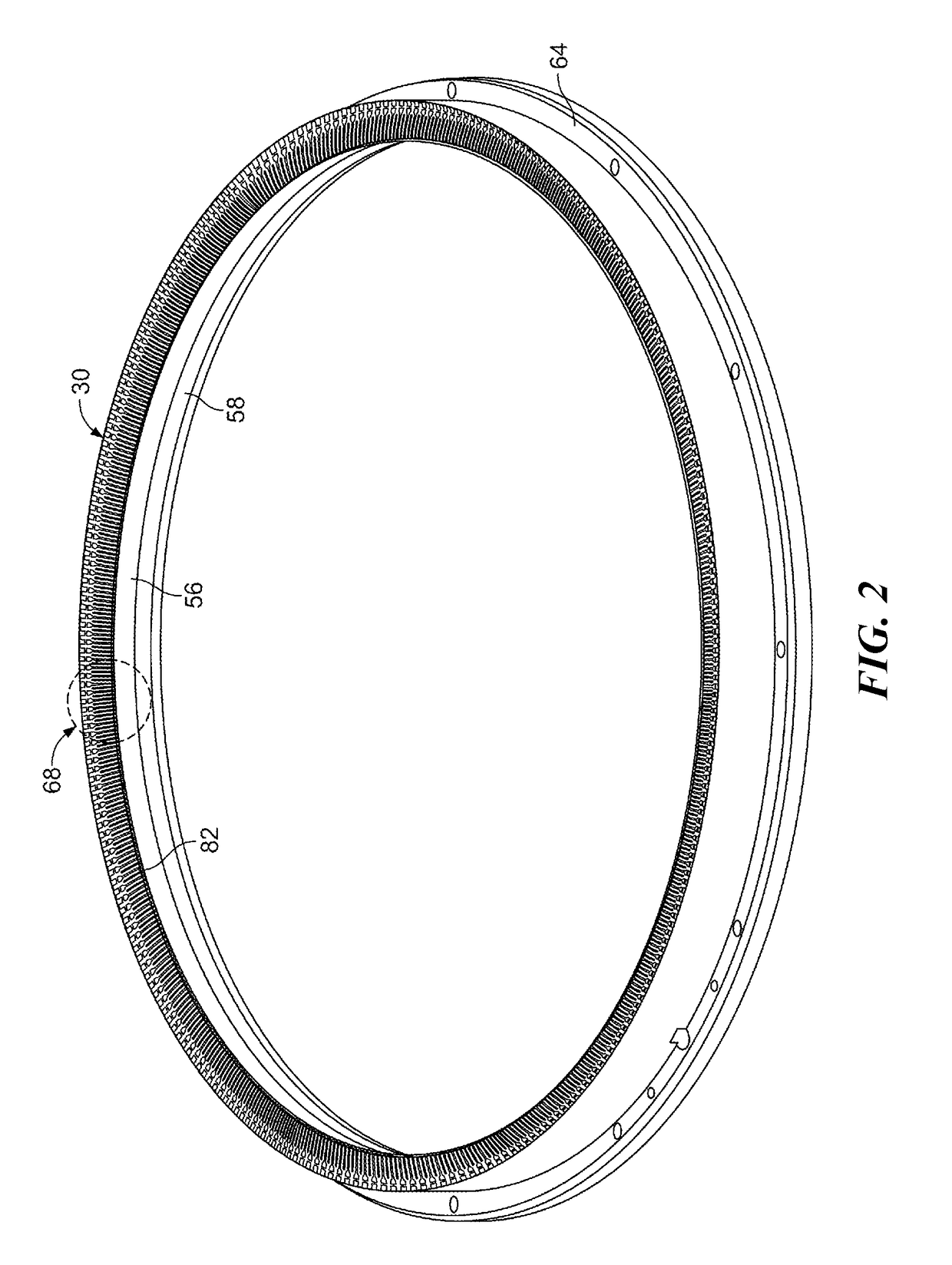Electroplating contact ring with radially offset contact fingers
a contact ring and radial offset technology, applied in the direction of contacting devices, electrolysis components, electrolysis processes, etc., can solve the problems of poor plating uniformity, reducing device yield, and difficulty in providing electroplating apparatus, and achieve good electroplating results
- Summary
- Abstract
- Description
- Claims
- Application Information
AI Technical Summary
Benefits of technology
Problems solved by technology
Method used
Image
Examples
Embodiment Construction
[0013]As shown in FIG. 1, and electroplating processor 20 has a head 22 including a rotor 24. A motor 28 in the head 22 rotates the rotor 24, as indicated by the arrow R in FIG. 1. An annular contact ring 30 on or attachable to the rotor 24 makes electrical contact with a wafer 100 held into or onto the rotor 24. The rotor 24 may include a backing plate 26, and ring actuators 34 for moving the contact ring 30 vertically (in the direction T in FIG. 1 between a wafer load / unload position and a processing position. The head 22 may include bellows 32 to allow for vertical or axial movement of the contact ring while sealing internal head components from process liquids and vapors.
[0014]Referring still to FIG. 1, the head 22 is engaged onto a frame 36. A vessel or bowl 38 within the frame 36 holds electrolyte. The head is movable to position a wafer 100 held in the rotor 24 into contact with electrolyte in the vessel 38. One or more electrodes are positioned in the vessel. The example sho...
PUM
| Property | Measurement | Unit |
|---|---|---|
| length | aaaaa | aaaaa |
| length | aaaaa | aaaaa |
| thick | aaaaa | aaaaa |
Abstract
Description
Claims
Application Information
 Login to View More
Login to View More - R&D
- Intellectual Property
- Life Sciences
- Materials
- Tech Scout
- Unparalleled Data Quality
- Higher Quality Content
- 60% Fewer Hallucinations
Browse by: Latest US Patents, China's latest patents, Technical Efficacy Thesaurus, Application Domain, Technology Topic, Popular Technical Reports.
© 2025 PatSnap. All rights reserved.Legal|Privacy policy|Modern Slavery Act Transparency Statement|Sitemap|About US| Contact US: help@patsnap.com



